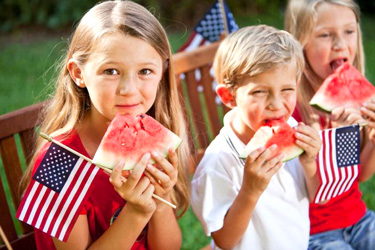For more than 100 years, here in the U.S. we have celebrated Labor Day, the first Monday in September. This annual tribute is dedicated to the social and economic achievements of American workers and recognizes the many contributions workers have made to our country.
The first Labor Day holiday was observed in New York City in 1882, in accordance with the guidelines of the Central Labor Union. While so much has changed in the world of work, as well local and global economies, traditional time-honored holiday activities continue: parades, speeches, festivals for the “recreation and amusement of the workers and their families,” and picnics.
One of my favorite images of Labor Day is set in Independence, Kansas, where Flo Owens, a middle-aged widow lives with her two daughters and a spinster boarder. When drifter Hal Carter arrives in time for the town’s Labor Day celebration, the women’s lives are disrupted and transformed. I am, of course, talking about William Inge’s Pulitzer Prize winning play, Picnic.
While a touching snapshot of small-town life, Picnic is the story of a stranger who breezes into town and unwittingly and unexpectedly becomes a catalyst for change. Familiar, long-held patterns suffer a seismic shift. Everyday lives are stirred up and long-suppressed feelings of bitterness and resentment emerge. But it is also about awakening passion, fighting for your dreams, glimpsing the possibilities, and feeling a tug in your throat.
It seems to me that we’re pretty stirred up right about now, too. Putting aside election hullabaloos, we scramble to get in that last outdoor summer adventure; we dash from one back-to-school sale to another; and we begin to plan for Homecoming and Halloween. (Pay no attention to that sign that says “Only 114 shopping days left til Christmas.”)
In addition, commuter traffic is back to normal, lunch rooms and coffee shop lines are once again crowded, and school buses are back to their neighborhood pick-ups. At work, performance reviews are approaching, trainings schedules are filling up, final grant reports are due, and fiscal years are both ending and beginning. And our fall/winter To-Do lists are growing at an alarming rate!
Of course Labor Day is not the end of the summer; that happens several weeks later with the Autumnal Equinox. It just feels like it. As we once again settle into routines and behind our desks recalling fond vacation memories, we may want to also think about our daily labor in terms of connections, coherence, and change.
 Let’s take advantage of the shifting light, the changing colors and the varying winds. Let’s look forward to disruption in our routines, welcome new challenges and seek out opportunities for excellence and growth. Let’s recognize and appreciate the contributions of others, as well as our own. Let’s remain clear about who we are, what is really important, and how we want to connect with others.
Let’s take advantage of the shifting light, the changing colors and the varying winds. Let’s look forward to disruption in our routines, welcome new challenges and seek out opportunities for excellence and growth. Let’s recognize and appreciate the contributions of others, as well as our own. Let’s remain clear about who we are, what is really important, and how we want to connect with others.
Let’s remember our Simple Rules.